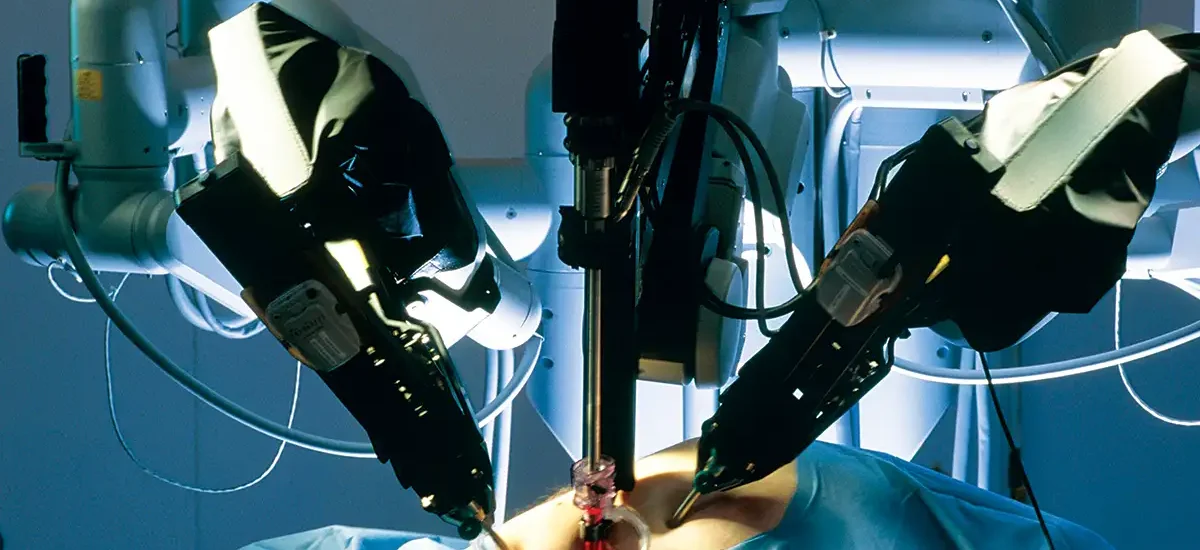Table of Contents
Introduction
In recent years, robotic surgery has emerged as a groundbreaking technology in the field of cancer treatment. With its precision, minimally invasive approach, and reduced recovery times, robotic surgery offers new hope for patients battling various types of cancer. Robotic surgery has transformed cancer treatment with its precise, minimally invasive techniques. It offers numerous advantages for patients undergoing procedures for various cancers. In this blog, we’ll delve into the advancements and benefits of robotic surgery in cancer treatment.
Understanding Robotic Surgical Procedures
The Evolution of Robotic Surgery
Robotic surgery has advanced significantly from its initial use in minimally invasive procedures. Today, it provides unparalleled precision and control, enhancing surgical outcomes.
Differences Between Robotic and Traditional Surgeries
Robotic surgery, also known as robot-assisted surgery, involves the use of advanced robotic systems to perform surgical procedures with enhanced precision and control. Unlike traditional open surgeries where the surgeon operates directly on the patient, robotic surgeries utilize robotic arms controlled by the surgeon from a console. This allows for more precise movements, smaller incisions, and reduced trauma to surrounding tissues.
Applications in Cancer Treatment
Robotic Surgery for Colorectal Cancer
Colorectal cancer surgery can be complex. Robotic-assisted procedures allow for precise resections with smaller incisions, leading to faster recovery and less post-operative discomfort.
Robotic Surgery for Gastric Cancer
Gastric cancer surgery is challenging due to tumor location. Robotic systems provide enhanced visualization and maneuverability, aiding in precise tumor removal while preserving healthy tissue. Robotic Surgery for Gynecological Procedures and Hysterectomy Robotic surgery is increasingly used in gynecological procedures, including hysterectomy. It offers a minimally invasive approach, shorter recovery times, and reduced post-operative pain for patients.
Robotic Surgery for Prostate Cancer
Prostate cancer treatment often requires surgery. Robotic procedures for prostatectomy offer a minimally invasive approach, reducing recovery times and complications.
Advantages of Robotic Surgery in Cancer Treatment
One of the key advantages of robotic surgery in cancer treatment is its enhanced precision and control. The robotic systems provide surgeons with a three-dimensional view of the surgical site and the ability to manipulate instruments with greater dexterity, resulting in more accurate procedures. Additionally, robotic surgery is minimally invasive, leading to smaller incisions, reduced blood loss, and faster recovery times compared to traditional open surgeries. This translates to shorter hospital stays and improved patient satisfaction.
Enhanced Precision and Control
Robotic surgery offers unparalleled precision, minimizing damage to surrounding tissues and organs, resulting in improved surgical outcomes.
Minimally Invasive Approach
Compared to traditional open surgeries, robotic procedures are minimally invasive, leading to smaller incisions, reduced blood loss, and faster recovery.
Reduced Complications
Robotic surgery is associated with lower rates of complications such as infection and bleeding, resulting in shorter hospital stays and improved patient satisfaction.
Complications Classification in Robotic Surgery
Understanding Complications in Surgical Procedures
Complications can arise during any surgery, including robotic procedures. These range from minor issues to more severe outcomes requiring immediate attention.
Classifying Complications in Robotic Surgery
Complications in robotic surgery are classified based on severity and impact on patient outcomes, including infections, bleeding, and tissue injury.
Comparison with Open Surgery
Benefits Over Traditional Open Surgery
Robotic surgery offers several advantages over traditional open surgeries, including smaller incisions, reduced blood loss, and faster recovery. It also provides enhanced visualization and precision.
Innovations: Transoral Robotic Surgery
Exploring Transoral Robotic Surgery
Transoral robotic surgery is a minimally invasive approach for head and neck cancers. It enables precise tumor removal while preserving vital structures and functions.
Impact on Pathological Outcomes
Evaluating Pathological Outcomes in Robotic Surgery
Robotic surgery improves pathological outcomes in cancer treatment, including higher rates of complete tumor resection and reduced margins of error.
Future Directions in Robot-Assisted Surgery
Emerging Technologies and Trends
Research in robot-assisted surgery continues to evolve, focusing on enhancing techniques, improving patient outcomes, and expanding applications in cancer treatment.
Addressing Concerns
Addressing Common Misconceptions
Despite its benefits, robotic surgery faces misconceptions. Educating patients and addressing concerns are essential for acceptance and confidence in this innovative approach.
Patient Safety and Satisfaction
Ensuring patient safety and satisfaction remain priorities in robotic surgery. Healthcare providers strive to deliver high-quality care, minimize risks, and optimize outcomes for cancer patients.
Conclusion
Robotic surgery has transformed the landscape of cancer treatment, offering new possibilities for patients and surgeons alike. With its precision, minimally invasive approach, and reduced recovery times, robotic surgery is redefining standards in oncological care, improving patient outcomes, and providing hope for a brighter future in the fight against cancer. Robotic surgery offers significant advantages in treating various cancers, including prostate, colorectal, gastric, and gynecological cancers. With precision, minimally invasive techniques, and reduced complications, it redefines standards in oncological care, improving patient outcomes and quality of life.
FAQs (Frequently Asked Questions)
Answer: Robotic surgery uses machines controlled by a surgeon to do operations, while traditional surgery involves the surgeon using their hands directly. Robotic surgery can be more precise, make smaller cuts, and help people recover faster.
Answer: No, robotic surgery is not suitable for all types of cancers. Its use depends on factors such as the location and stage of the cancer, as well as the surgeon’s expertise and the availability of robotic technology.
Answer: Potential complications of robotic surgery include risks associated with anesthesia, bleeding, infection, injury to nearby organs or tissues, and technical malfunctions of the robotic system.
Answer: The recovery period after robotic surgery is typically shorter and patients can often resume normal activities sooner compared to traditional surgery.
Answer: Some insurance plans may cover robotic surgery, but it’s essential for individuals to check with their insurance provider to confirm coverage and any associated terms or conditions.



